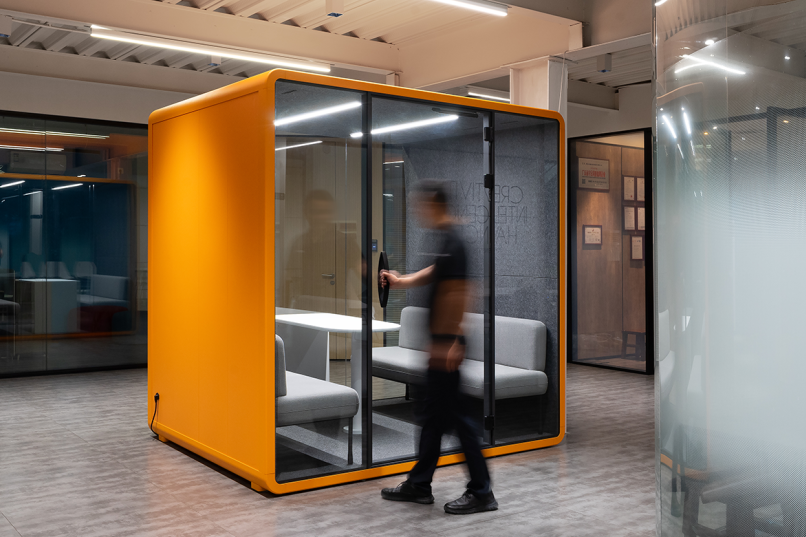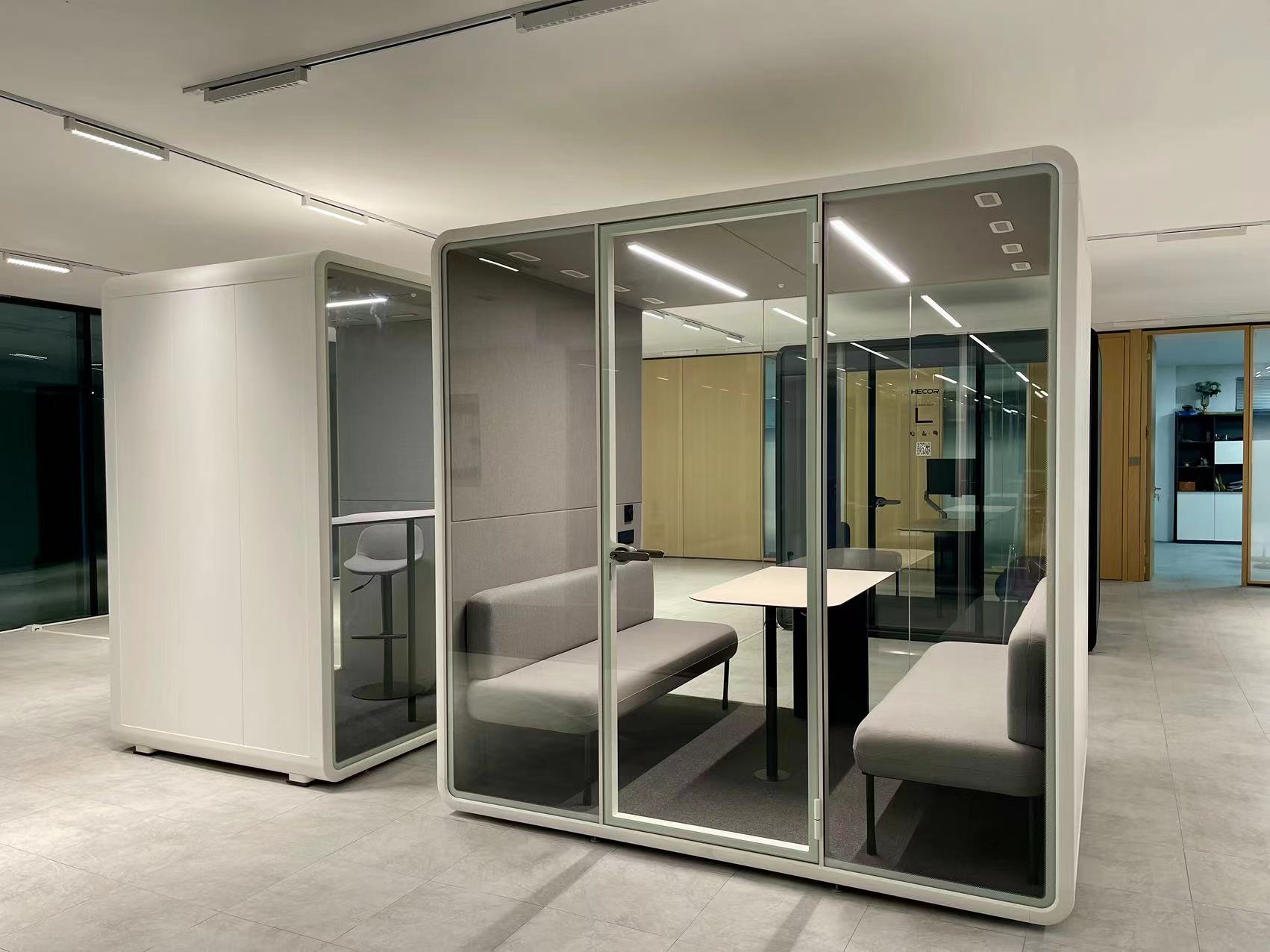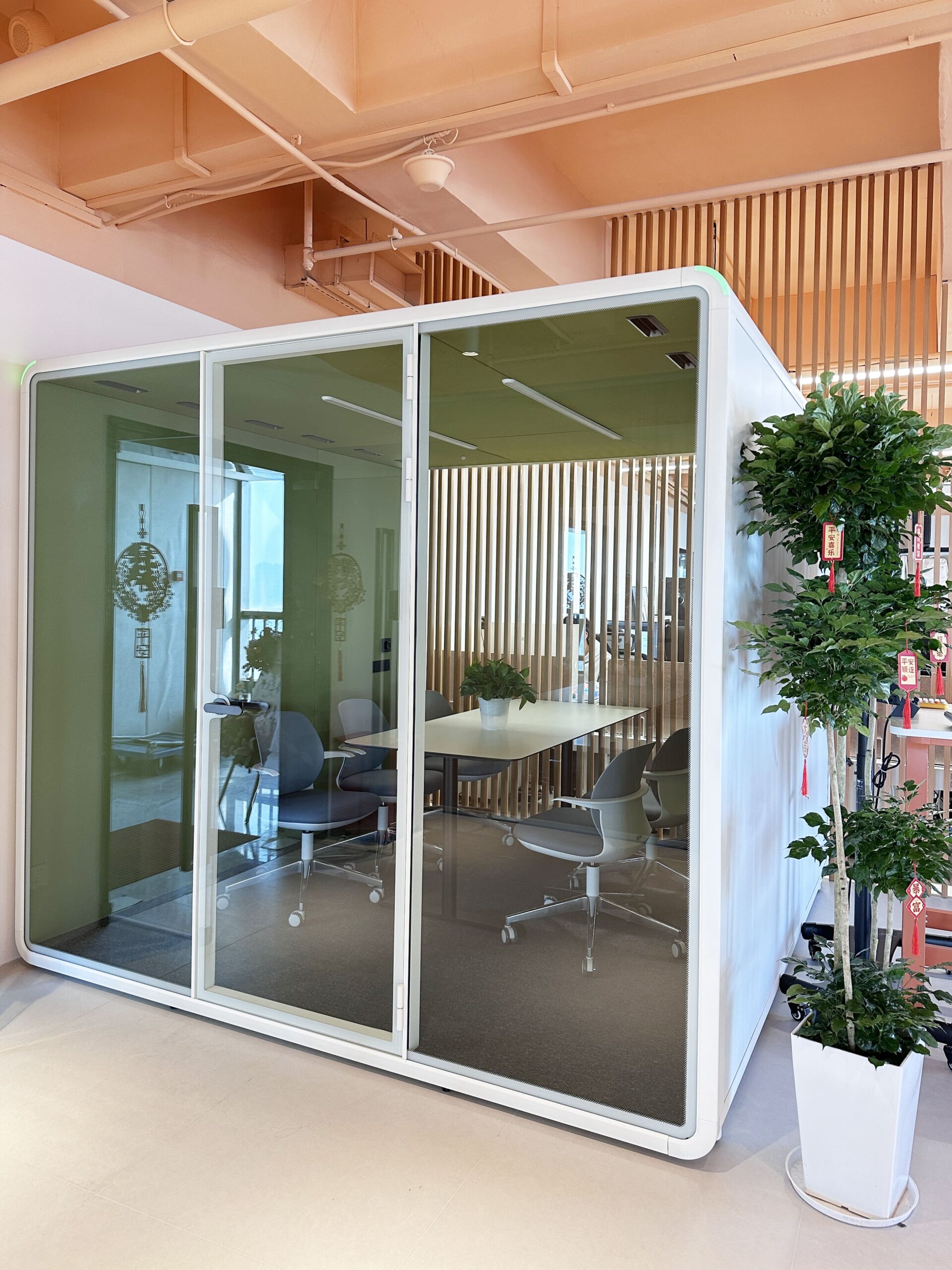Principles of Ventilation System Design for Soundproof Pods
Soundproof pods are designed to create isolated, quiet environments, but maintaining air quality and comfort requires a well-engineered ventilation system. Below are the core principles behind designing effective ventilation systems for soundproof pods.
Balancing Noise Reduction and Airflow
The primary challenge in soundproof pod ventilation is ensuring adequate airflow without compromising acoustic performance.
- Sound-Absorbing Ductwork:
Ventilation ducts in soundproof pods are lined with sound-absorbing materials to minimize noise transmission. These materials, such as acoustic foam or mineral wool, reduce the noise generated by air movement and equipment. - Baffled or Curved Pathways:
Ducts are designed with baffles or curved pathways to slow down airflow and reduce turbulence, which can generate noise. This design also helps distribute air evenly throughout the pod. - Low-Noise Fans and Motors:
Ventilation systems use fans and motors with low noise ratings to prevent mechanical sounds from disrupting the pod’s quiet environment. These components are often mounted on vibration-dampening materials to further reduce noise.
Maintaining Air Quality and Comfort
A ventilation system must ensure a steady supply of fresh air while removing stale air and contaminants.
- Fresh Air Intake and Exhaust:
The system includes separate intakes for fresh air and exhausts for stale air. This setup prevents the recirculation of contaminated air and maintains a healthy environment. - Air Filtration:
High-efficiency particulate air (HEPA) filters or activated carbon filters are integrated into the ventilation system to remove dust, allergens, and odors from the incoming air. This ensures clean, breathable air inside the pod. - Temperature and Humidity Control:
Some ventilation systems include heating or cooling elements to regulate temperature and dehumidifiers to manage humidity. These features enhance comfort, especially in extreme weather conditions.

Energy Efficiency and Sustainability
Modern ventilation systems for soundproof pods prioritize energy efficiency to reduce operational costs and environmental impact.
- Heat Recovery Ventilation (HRV):
HRV systems exchange heat between incoming and outgoing air streams, reducing the energy needed to heat or cool fresh air. This technology improves energy efficiency without compromising air quality. - Smart Sensors and Automation:
Ventilation systems are equipped with sensors that monitor air quality, temperature, and humidity. Automated controls adjust fan speeds and airflow based on real-time data, optimizing energy use. - Low-Power Components:
Energy-efficient fans, motors, and lighting are used to minimize power consumption. Some systems also incorporate solar panels or other renewable energy sources to further reduce reliance on the grid.
Integration with Pod Design
The ventilation system must seamlessly integrate with the pod’s structure and aesthetics.
- Compact and Modular Design:
Ventilation components are designed to fit within the pod’s limited space without compromising functionality. Modular designs allow for easy installation, maintenance, and upgrades. - Aesthetic Considerations:
Grilles, vents, and other visible components are designed to blend with the pod’s interior. This ensures the ventilation system does not detract from the pod’s overall appearance. - Accessibility for Maintenance:
The system is designed for easy access to filters, fans, and other components for cleaning or replacement. This reduces downtime and ensures long-term reliability.
Conclusion
Designing a ventilation system for soundproof pods requires a careful balance of noise reduction, air quality, energy efficiency, and integration with the pod’s design. By incorporating sound-absorbing materials, low-noise components, air filtration, and smart automation, these systems ensure a comfortable, healthy, and quiet environment for users. As demand for soundproof pods grows, ventilation technology will continue to evolve, offering even more innovative solutions for creating private, noise-controlled spaces.



